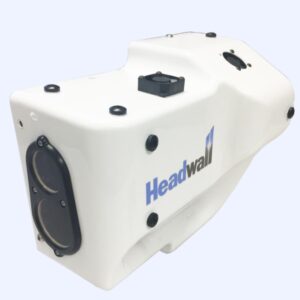Caméras Hyperspectrales
L’imagerie hyperspectrale est une technique combinant l’imagerie et la spectroscopie où chaque image est prise pour une bande étroite du spectre électromagnétique. Par exemple, l’œil humain voit la lumière en trois bandes (rouge, vert et bleu) tandis que l’imagerie hyperspectrale permet de « voir » en un très grand nombre de bandes allant typiquement du visible au proche infrarouge.
Le terme hyperspectral fait référence au nombre de bandes qu’il est possible de prendre à travers le spectre électromagnétique. Il existe actuellement deux technologies d’imagerie hyperspectrale : Snapshot et Pushbroom. Les caméras hyperspectrales sont utilisées dans différentes industries, notamment pour l’identification de certains matériaux ou objets. Ainsi, on peut citer : les industries pharmaceutiques, l’agriculture, l’écologie ou encore l’astronomie.

Les solutions PHOT'Innov
PHOT’Innov distribue et développe des solutions optoélectroniques de haute technologie, innovants et sur-mesure pour servir la Filière Photonique.
Expertise & Connaissance
20 ans d’expérience dans le domaine de la Photonique pour le meilleur conseil
Service & Support
Un objectif que nous avons sur la durée, c’est votre satisfaction
Innovation
Des partenaires ciblés toujours à la pointe de la technologie
Les caméras hyperspectrales
L’imagerie hyperspectrale est une technique non destructive qui explore le spectre électromagnétique au-delà des trois canaux spectraux (RGB) des caméras standards. Cette méthode permet de détecter un très grand nombre de bandes allant typiquement du visible jusqu’au proche infrarouge. L’imagerie hyperspectrale fait l’acquisition de bandes spectrales étroites (≤10 nm) et contigües. Une caméra hyperspectrale fournit pour chaque pixel une caractéristique du matériau photographié. Les applications sont nombreuses. Par exemple : détermination du stress hydrique, détection de parasites, détection et suivi de la pollution, mesure de la qualité de l’air, caractérisation des étoiles et des exoplanètes, analyse d’œuvres d’art pour restauration, contrôle qualité, identification de matériaux étrangers, tri des minerais, analyse des roches, contrôle qualité du papier, tri des déchets ménagers…



















